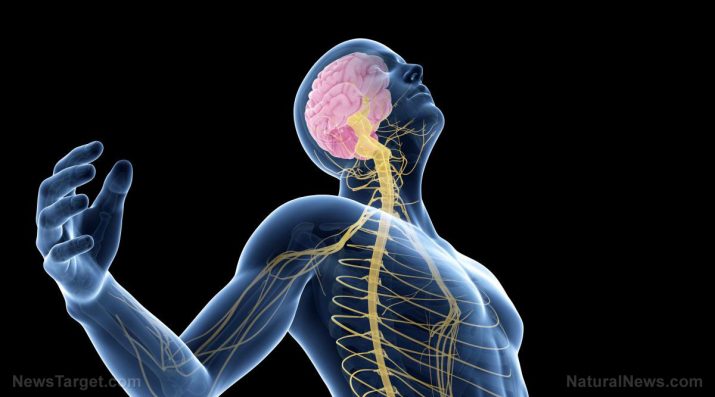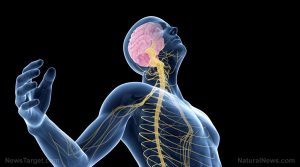
Metachromatic Leukodystrophy – causes, side effects and treatments at NaturalPedia.com
Wednesday, July 25, 2018 by Zoey Sky
http://www.naturalpedia.com/metachromatic-leukodystrophy-causes-side-effects-and-treatments-at-naturalpedia-com.html

Metachromatic leukodystrophy (MLD) refers to a rare genetic disorder. Patients with the condition suffer from the deficiency of an enzyme that helps break down fatty substances that makes lipids build up in their brain, peripheral nerves, and spinal cord.
When a patient has MLD, their brain and nervous system will gradually lose function. This may occur due to the deficiency of a non-enzyme protein.
There are three types of MLD, and each one produces similar symptoms. The three types of the disorder are identified by the patient’s age when they develop the symptoms. The three forms of MLD include:
- Late infantile MLD – Occurs in children aged six to 24 months.
- Juvenile MLD – Occurs among children aged three to 16 years old.
- Adult MLD – Occurs in teenagers or adults of any age.

Known symptoms of metachromatic leukodystrophy
The general symptoms of metachromatic leukodystrophy, which are observed in patients with any of the three forms of the disease, usually include:
- Abnormal muscle movement
- Behavioral problems
- Decreased mental function
- Decreased muscle tone
- Difficulty eating or feeding themselves
- Difficulty speaking
- Difficulty swallowing
- Difficulty walking
- Frequent falls
- Incontinence
- Irritability
- A loss of muscle control
- Problems with nerve function
- Seizures
Since metachromatic leukodystrophy is a genetic condition, having one or both parents with the disease increases your risk of developing MLD.
Body systems harmed by metachromatic leukodystrophy
Since metachromatic leukodystrophy is a progressive condition, the main complication linked to the disease is the gradual loss of cognitive ability. MLD is also linked to early death among patients.
Food items or nutrients that may prevent metachromatic leukodystrophy
The following foods or nutrients can help prevent metachromatic leukodystrophy or address its symptoms:
- Amla/Indian gooseberry (Emblica officinalis) – Indian gooseberry is full of antioxidants, vitamin B, C, and other components that can boost the immune system. It can also help enhance memory.
- Flaxseed – Flaxseed can help prevent and treat conditions like Alzheimer’s, depression, and schizophrenia. Flaxseed has omega-3 fatty acids and alpha-Linoleic acid (ALA) that are turned into docosahexaenoic acid (DHA) which is needed to maintain brain health.
- Licorice (Glycyrrhiza glabra) – Licorice can help treat different conditions linked to anxiety, stress, and memory loss. Additionally, it has anxiolytic (reduces anxiety) and anti-inflammatory properties.
- Shatavari (Asparagus racemosus) – Shatavari is a species of asparagus that is rich in antioxidants that can which help enhance the memory and prevent amnesia.
Treatments, management plans for metachromatic leukodystrophy
There is no cure for metachromatic leukodystrophy. However, a healthcare professional may suggest treatments so you can manage your symptoms.
Treatment for MLD may include:
- Medications – This can help control muscle movements and reduce pain.
- Nutritional assistance – This can help patients cope with eating and swallowing difficulties.
- Therapy – This can help improve muscle movements, quality of life, and speech.
Where to learn more
- Healthy Essential Fatty Acid Balance Alters Genes, Protects from Disease
- Misdiagnoses rampant among psych drug users; children with digestive problems being labeled schizophrenic, drugged with deadly SSRIs
- Pyroluria ,or pyrrole disorder, is a little known genetic disorder that may lead to depression, anxiety and behavioral disorders
- Top Reasons why Artificial Sweeteners can be Dangerous
- Vitamin D supplements influence genes in healthy individuals, could stop cancer, heart disease
Summary
Metachromatic leukodystrophy (MLD) refers to a rare genetic disorder. Patients with the condition suffer from the deficiency of an enzyme that helps break down fatty substances that cause lipids to build up in their brain, peripheral nerves, and spinal cord.
The general symptoms of metachromatic leukodystrophy usually include abnormal muscle movement, behavior problems, and decreased mental function.
Since metachromatic leukodystrophy is a progressive condition, the main complication linked to the disease is the gradual loss of cognitive ability.
There is no cure for metachromatic leukodystrophy. However, a healthcare professional may suggest treatments so you can manage your symptoms.
Treatment for MLD may include medications, nutritional assistance, and therapy.
Sources include:
Tagged Under: Tags: Metachromatic leukodystrophy





